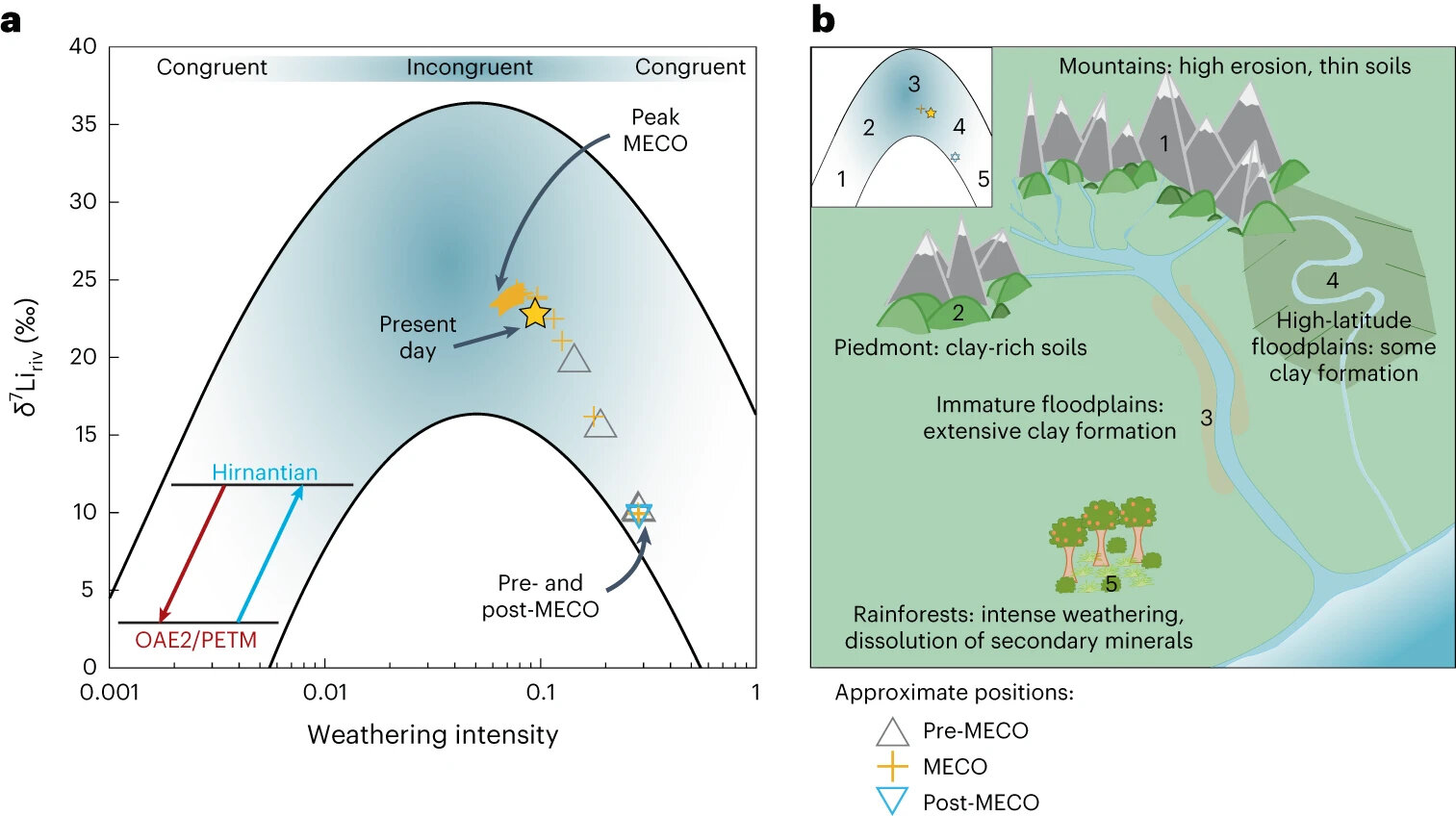Global warming is not solely a modern-day occurrence but has been a prominent feature of Earth’s geological history for millennia. One such warming event 40 million years ago”>event occurred approximately 40 million years ago, lasting ~400,000 years, known as the Middle Eocene Climatic Optimum (MECO).
This event is considered unusually long when compared to climatic perturbations earlier in the Eocene, such as the Paleocene-Eocene Thermal Maximum approximately 56 million years ago, which lasted ~200,000 years. New research published in Nature Geoscience suggests the MECO may have been impacted by changes to rock weathering, specifically the weathering of silicate minerals, such as quartz, feldspar, mica, pyroxene and clays. Michael Henehan has published a News & Views piece on the research in the same journal issue.
Chemical weathering of silicate rocks helps to counterbalance rising atmospheric carbon dioxide levels, as this gas dissolves in rainwater and the acidic product then weathers rocks, with new minerals formed and often producing calcium carbonate that is then stored on the seafloor. Therefore, drawing carbon dioxide out of the atmosphere helps to reduce the effects of greenhouse forcing and so decreases the planet’s temperature.
Dr. Alexander Krause from University College London, U.K., and colleagues conducted analyses on carbonate rock cores obtained from the seabed from ocean drilling projects in the equatorial and southern Atlantic Ocean and equatorial Pacific Ocean. They measured lithium isotope ratios (the relative abundances of the same element but with different atomic masses, 6Li and 7Li, herein referred to as δ7Li), which is considered an indicator of silicate weathering.
The research team identified a distinct positive peak of ~3‰ in δ7Li coinciding with the climate warming. Significantly, this is the only known positive δ7Li recorded during a warming event. They attribute this to a change in weathering style, from congruent (complete dissolution of the original minerals) to incongruent (partial dissolution with leaching and modification producing new secondary minerals).
2023-09-02 15:48:02
Post from phys.org
